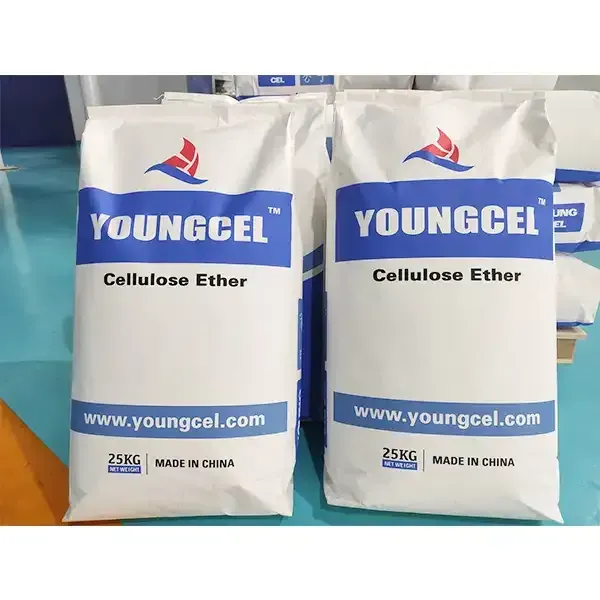Understanding Hydroxypropyl Methyl Cellulose (HPMC) Applications and Benefits
Hydroxypropyl methyl cellulose (HPMC) is a cellulose ether that has garnered significant attention across various industries due to its versatile properties
. This non-ionic polymer derived from cellulose is widely used as a thickening agent, emulsifier, and film-forming agent, making it an essential ingredient in food, pharmaceuticals, cosmetics, and construction materials.Composition and Properties of HPMC
HPMC is synthesized through the modification of natural cellulose, a biopolymer derived from plants. This modification involves the substitution of hydroxyl groups in cellulose with hydroxypropyl and methyl groups, which enhances its solubility in water and greatly improves its functional characteristics. Because of these modifications, HPMC can dissolve in hot or cold water to form a viscous solution, which is crucial for many applications.
One of HPMC's standout features is its ability to exhibit excellent thermal stability. Unlike many other thickening agents, HPMC retains its viscosity across a wide temperature range, making it ideal for use in applications that involve varying heat levels. Moreover, due to its non-ionic nature, HPMC does not gel and flocculate in the presence of electrolytes, which is a significant advantage over other gums and thickeners.
Applications of HPMC
1. Food Industry In the food sector, HPMC is utilized as a food additive, classified under E464. It acts as a thickener, stabilizer, and emulsifier in many processed foods. For instance, it is commonly used in sauces, salad dressings, and dairy products to improve texture and mouthfeel. HPMC's ability to retain moisture also helps extend the shelf life of baked goods.
2. Pharmaceuticals HPMC is extensively used in the pharmaceutical industry for its role as a binder and coating agent in tablets and capsules. It aids in controlling the release of active ingredients, thus enhancing the efficacy and bioavailability of medications. Additionally, HPMC is employed as a suspending agent in liquid formulations, ensuring uniform dispersion of suspended particles.
hydroxypropyl methyl cellulose hpmc

3. Cosmetics and Personal Care In the cosmetics industry, HPMC is valued for its emollient and film-forming properties. It is commonly found in lotions, creams, and gels, where it helps achieve desired viscosity and texture. HPMC also enhances the performance of products by improving spreadability, hydration, and stability.
4. Construction The construction industry benefits from HPMC as a key ingredient in cement-based materials. It acts as a water retention agent, promotes workability, and prevents cracking and dust formation in plaster and tile adhesives. HPMC helps in achieving optimal consistency and performance, making it a preferred additive in many construction applications.
Benefits of Using HPMC
The use of HPMC brings several advantages to various industries. Its non-toxic and biodegradable nature makes it a safe choice for food and pharmaceutical applications, aligning with growing consumer demand for natural and eco-friendly products. Furthermore, the versatility of HPMC allows manufacturers to adjust its properties, such as viscosity and solubility, to tailor solutions for specific needs.
Another significant benefit is its compatibility with other ingredients. HPMC can easily blend with a variety of substances, enhancing product formulation without compromising performance. This characteristic has led to innovative applications and formulations that leverage HPMC's unique properties.
Conclusion
Hydroxypropyl methyl cellulose is an invaluable polymer with broad applications across food, pharmaceuticals, cosmetics, and construction. Its unique properties, such as thermal stability, excellent thickening capability, and non-toxic nature, position HPMC as a crucial ingredient in various formulations. As industries continue to innovate and seek sustainable solutions, HPMC is likely to remain a prominent player, helping to shape the future of product development in multiple sectors.
-
The Application and Significance of Construction RdpNewsMay.19,2025
-
Industrial Grade HpmcNewsMay.19,2025
-
Building Coating Adhesive Building Coating Adhesive HpmcNewsMay.19,2025
-
Application Of Hpmc For Detergent For Detergent In DetergentsNewsMay.19,2025
-
Application Of Hpmc Cellulose In Cement-Based MaterialsNewsMay.19,2025
-
Application Of High Quality Hpmc For Construction In The Field Of ConstructionNewsMay.19,2025




